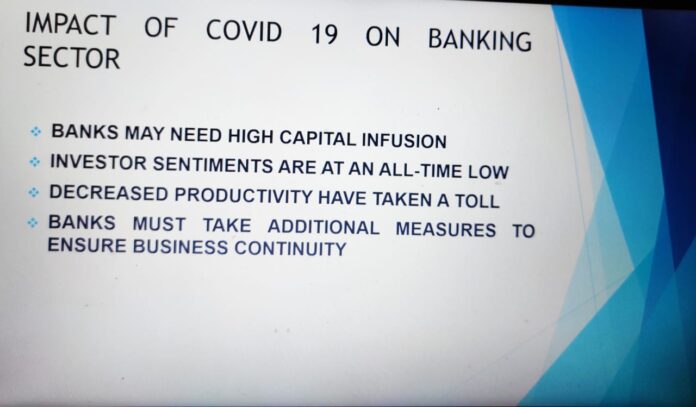Satyakam*
COVID-19 has generated significant instability and high volatility in global financial markets. While the full impact is yet to be ascertained, it’s expected that the adverse impacts are likely to continue much longer post lockdown is completely lifted.
Investor sentiments are at an all-time low and it is also becoming evident how difficult it is going to be for banks all over the world including India to maintain asset quality and good earnings. Due to the shutdowns and income slowdown, many repayments of loans, will have to be postponed, putting additional pressure on already stressed balance sheets of the banks.
Decreased productivity have taken a toll on the financials of the corporate sector. Supply chain disruptions, manufacturing hindrances and crippled health systems require a hefty public fund/stimulus to continue operations smoothly. Income from tourism, entertainment sectors among many others have already touched rock bottom adding fuel to fire. Factors like these are all adding up to strain the global economy which will have its repercussions in the year ahead. Nature and scale of impact may vary on economy to economy based on the quantum of reliance individual economy has on impacted sector.
The governments and the regulators across the world, have rightly responded by providing an economic stimulus package with several measures to shore up liquidity and provide much required cushion on several financial and compliance commitments. Financial institutions have taken responsive measures to the pandemic and aim to reduce in-person interactions, downsize operations while providing financial support to retail and institutional customers.
A continued spread of the pandemic and its aftermath will significantly slow down businesses, hence banks must take additional measures to ensure business continuity to continue to remain relevant to their customers. Banks and financial institutions must prepare for scenarios that might occur post the lockdown period as well. This would be essential in developing a flexible contingency plan that best equips the banks for crisis management and provides supportive solutions to its customers.
Amid the highly uncertain situation due to the pandemic, financial institutions need to stress test their portfolios, for each of the defined scenarios, to better understand the impact. Identifying sectors/regions/clients that are most at risk and re-evaluating the loan loss provisions under different economic scenarios will be critical. Would definitely require redrawing long-term financial plans under revised circumstances.
The current challenges are likely to translate into high capital infusion requirements for the banks to maintain both regulatory as well as capital required to remain in business.
While the long-term implications of the pandemic for the Indian financial services sector is unknown, when normalcy returns, banks, and NBFCs would likely have learnt a few lessons. These may include how to best retain operational resilience when confronted with future pandemics, and possibly how to redesign new operating models such as alternate work arrangements and innovative ways to interact with customers in a remote set-up. Furthermore, the pandemic may further accelerate migration to infrastructure of the future – digital channels and connectivity.
Institutions that take sensitive measures to ensure customer and employee reliefs, will be able to truly differentiate and eventually grow and sustain themselves. In summary, times will be tough but by adopting a vigilant short, medium and long-term action plans, banks will emerge from this crisis as stronger, confident and socially more responsible institutions.

*Satyakam is a qualified Chartered Accountant, Cost Accountant & Company Secretary by qualifications. He has over 25 years of corporate experience in fields like Treasury, Accounting & Outsourcing Industry.



